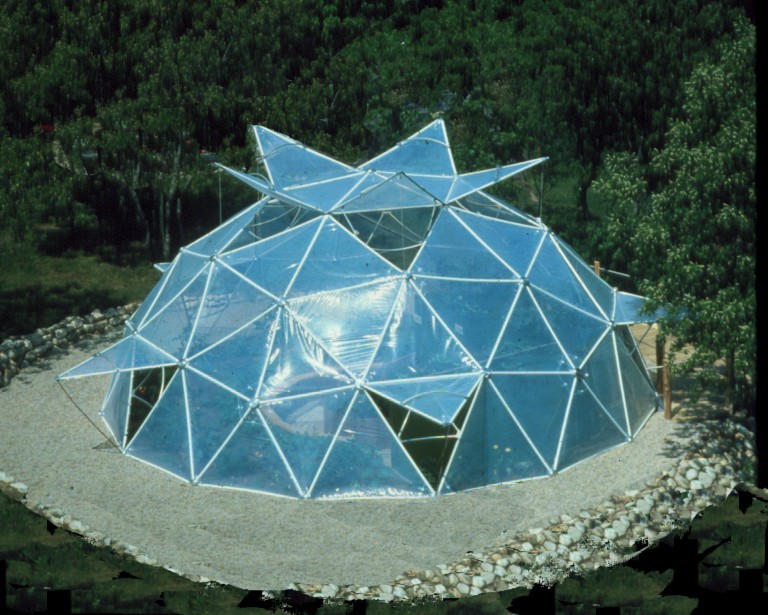Bioshelter Arks

Cape Cod Ark
The Cape Cod Ark was built to see if it is possible to grow food in the Northeastern United States’ climate through the winter in a greenhouse, without using on fossil fuels or pesticides. It also was conceived to test whether fish ponds inside a greenhouse would improve the food yields of both the ponds and the greenhouse.
Research and experience over several decades proves that yes, all these things are possible in a cold climate. And better yet, such a warm, plant-filled environment is a remarkably pleasant living space when attached to a home.
Prince Edward Island Ark
The Prince Edward Island Ark tested the bioshelter concept in a very cold climate, and was the first bioshelter with built-in residential housing. A colder climate required more intense collection and storage of solar energy, using solar ponds, active hot water collectors and active hot air collectors.
Funded and managed by the PEI government, the Ark served both as a research building for agriculture and aquaculture and an educational facility for the public.
When the PEI Ark was built, the only eco-toilet available that would conserve water and recover nutrients was the Clivus Multrum. Since then, composting toilets have evolved and improved. Read more about eco-toilets here.
Living lightly on the earth: building an Ark for Prince Edward Island, 1974-76
A public exhibition, website and book explores the PEI Ark as a symbol of the emergence of ecological architecture and social change for sustainability on Prince Edward Island in the 1970s. From October 22, 2016 to April 30, 2017 a 40 year anniversary retrospective of the Ark was displayed at the Confederation Center for the Arts in Charlottetown, PEI. The exhibition is designed to travel to design-oriented and public art galleries across Canada, accompanied by a color-illustrated 100-page book, published by Dalhousie Architectural Press.
Pillow Dome

A dome greenhouse has the advantage of minimal shading caused by the strong, efficient dome structure. Maximizing sunlight into a greenhouse is often more important than minimizing the loss of heat out of the greenhouse.
The Pillow Dome, pictured here at New Alchemy in 1982, admitted maximum light and was also well insulated with three-layer inflated pillows. The high, open interior space included tall fish pond, a large fig tree, and vegetable beds.
For more information, read:
- The Pillow Dome
by J. Baldwin
Buckminister Fuller Institute, 1985


